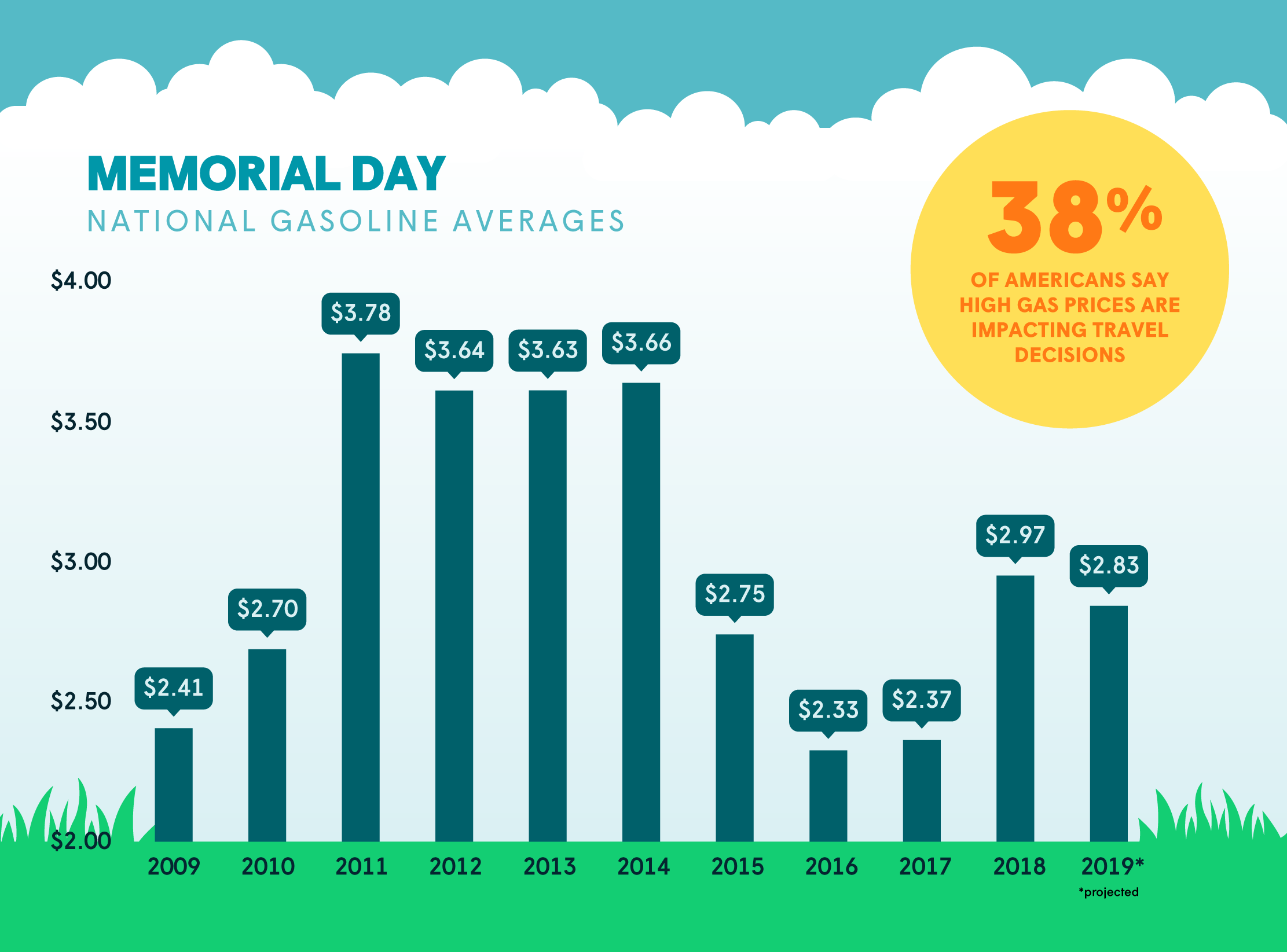BOSTON — The largest seasonal surge in gas prices since 2011 isn’t slowing down travel plans this summer as more Americans are hitting the road than staying home, according to GasBuddy’s 2019 Summer Travel survey.
According to the annual survey, nearly 75 percent of Americans said they will take a road trip this summer, a 16 percent increase from last year, while 38 percent cited high gas prices for impacting their summer travel decisions, nearly the same as 2018’s gas price sentiment.
The increase in motorist’s desire to hit the road comes as the national average has gently fallen after advancing 67c/gal from New Year’s Day to a peak on May 4, the second largest seasonal rise ever behind a 93c/gal surge in 2011 and ahead of last year’s 49c/gal rise. Gas prices are expected to fall slightly ahead of the holiday weekend, with GasBuddy predicting the national average at $2.83 per gallon on Memorial Day, 14-cents lower than Memorial Day last year, helping motorists spend $287 million less from Thursday to Monday.
“For many Americans, this spring has pinched pocketbooks at a dizzying rate, but that still won’t hold back many from hitting the road for the 90 days or so of prime summer weather. While the rise in prices has been steep this spring, perhaps the most important factor is that in many places, gas prices are still well below their all-time highs and perhaps even more importantly, over 50 percent of the nation’s gas stations are selling at $2.99 per gallon or less, and that’s a key ingredient in the recipe for many Americans to hit the road again this summer,” said Patrick DeHaan, head of petroleum analysis at GasBuddy.
GasBuddy’s 2019 Summer Travel Survey Highlights:
- Trips farther from home. Americans who are taking a road trip this summer are covering more ground. Forty-two percent will be driving more than 500 miles round trip, compared to 31 percent in 2018.
- More time away. Seven percent more people plan to take trips longer than one week this summer compared to last year, while weekend trips and day trips are down 7 percent.
- Overpaying for gasoline #1 road trip fear. With higher gas prices this summer, the number one road trip fear is overpaying at the pump, followed by the car breaking down and needing to use a restroom but unsure of which gas stations have clean facilities.
- Convenience, price and curb appeal. When deciding where to stop, travelers continue to care about convenience and price. The top 3 factors when choosing a pit stop include: (1) convenient location, (2) gas prices and (3) curb appeal.

GasBuddy Summer Travel Survey issued to 1,680 GasBuddy members from on April 24, 2019. Summer travel is defined as the period between May 24 – Sept. 2, 2019 (Memorial Day through Labor Day).
About GasBuddy
GasBuddy is a company that connects drivers with their Perfect Pit Stop. As the leading source for crowdsourced, real-time fuel prices at more than 150,000 gas station convenience stores in the U.S., Canada and Australia, millions of drivers use the GasBuddy app and website every day to find gas station convenience stores based on fuel prices, location and ratings/reviews. GasBuddy’s first-of-its-kind fuel savings program, Pay with GasBuddy, has saved Americans more than $6 million at the pumps since its launch in 2017. The company’s business solutions suite, GasBuddy Business Pages, provides Fuel Marketers and Retailers their best opportunity to maintain their station information, manage their brand, and promote to their target consumer audience. For more information, visit http://www.gasbuddy.com.





